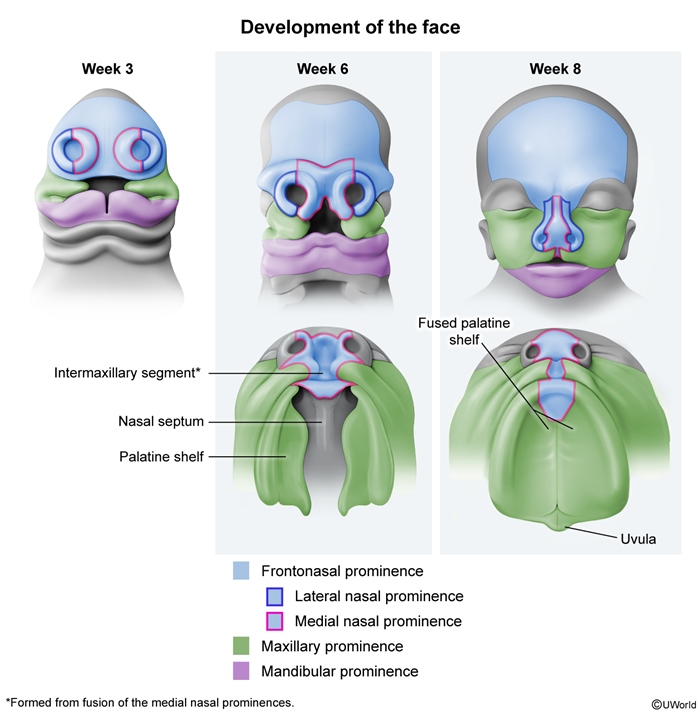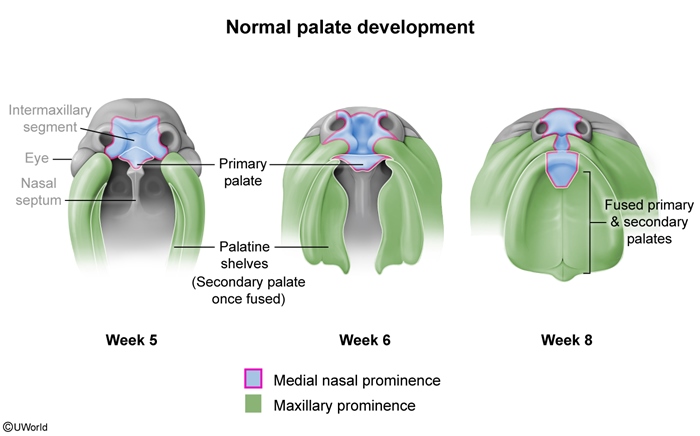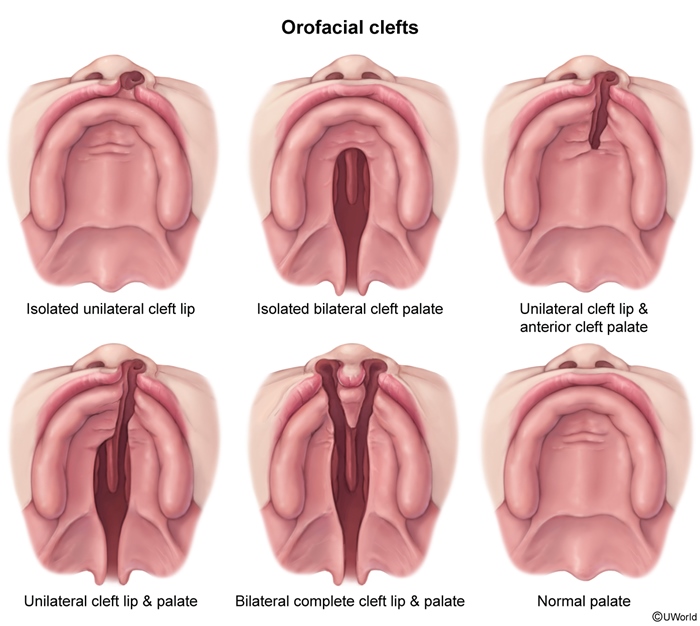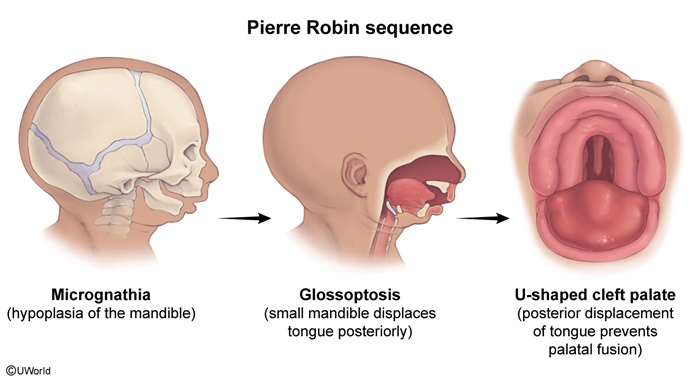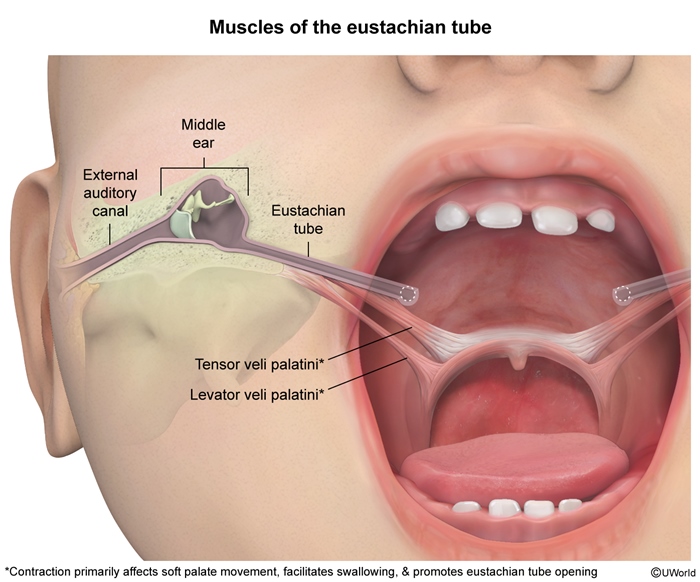Cleft Lip And Palate
Article Sections
Introduction
Cleft lip and palate (CLP) result from incomplete fusion of the facial structures during early embryonic development. Referred to collectively as orofacial clefts, CLP are among the most common congenital craniofacial anomalies.
Pathophysiology and risk factors
The lip and palate form through a series of structural changes and fusions involving 5 structures (Figure 1): the frontonasal prominence (containing the intermaxillary segment), the paired maxillary prominences, and the paired mandibular prominences. Failed fusion between the embryonic facial prominences during early fetal development causes CLP:
- Cleft lip: The intermaxillary segment fuses with the left and right maxillary prominences by the 5th-6th week of gestation, forming the upper lip. Failed fusion results in cleft lip.
- Cleft palate: The palatine shelves fuse with each other and the primary palate by the 8th-9th week of gestation, forming the palate (
Continue Learning with UWorld
Get the full Cleft Lip And Palate article plus rich visuals, real-world cases, and in-depth insights from medical experts, all available through the UWorld Medical Library.
Figures
